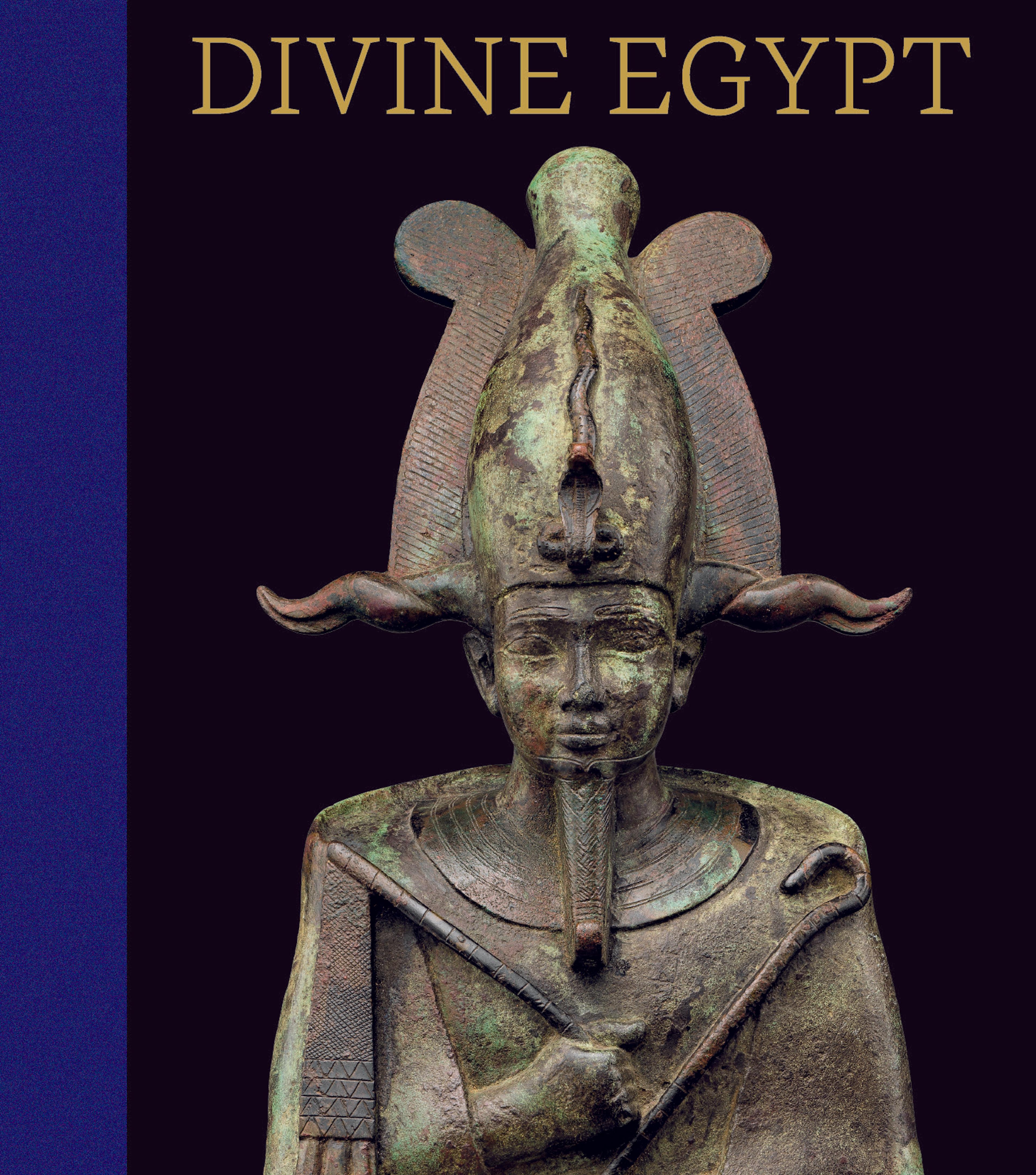Column with Hathor-emblem capital and names of Nectanebo I on the shaft
Hathor columns began as 'sistrum-columns' - columns assimilated to the shaft of a sistrum with capitals showing on opposite sides heads of Hathor topped by a naos-sistrum sound-box. This form had a long history from the beginning of the New Kingdom. But especially with the Late Period, a four-sided capital or an abacus (the uppermost column element, above the capital) with Hathor-emblems on each side becomes widely used, and in these cases the term sistrum-column is no longer correct. These Hathor columns with representations on four sides relate to an understanding of Hathor as a cosmic and powerful goddess, her face directed to the four corners of the earth.
Hathor columns were particularly favored at temples connected with goddesses or with mammisi-temples ( "birth houses"), which were devoted to the birth of the divine son of a goddess. However, smaller versions like this one appear that must have been used in connection with kiosks or baldachins or other small structures, or may even have served as cult emblems themselves to judge from the represenations shown on some temple naoi.
This column has the names of Nectanebo I, and originates in the Delta according to the information passed on about its findspot at the time of its purchase. The column was quite elaborately treated: it retains extensive traces of paint, and the goddess's eyes were originally inlaid. The collar worn by the Hathor head is not a typical broad collar, but narrows toward either end and represents the enat beads the goddess may wear.
Link to a blog post
Petrified Sound and Digital Color: A Hathor Column in the New Ptolemaic Galleries
Hathor columns were particularly favored at temples connected with goddesses or with mammisi-temples ( "birth houses"), which were devoted to the birth of the divine son of a goddess. However, smaller versions like this one appear that must have been used in connection with kiosks or baldachins or other small structures, or may even have served as cult emblems themselves to judge from the represenations shown on some temple naoi.
This column has the names of Nectanebo I, and originates in the Delta according to the information passed on about its findspot at the time of its purchase. The column was quite elaborately treated: it retains extensive traces of paint, and the goddess's eyes were originally inlaid. The collar worn by the Hathor head is not a typical broad collar, but narrows toward either end and represents the enat beads the goddess may wear.
Link to a blog post
Petrified Sound and Digital Color: A Hathor Column in the New Ptolemaic Galleries
Artwork Details
- Title:Column with Hathor-emblem capital and names of Nectanebo I on the shaft
- Period:Late Period
- Dynasty:Dynasty 30
- Reign:reign of Nectanebo I
- Date:380–362 BCE
- Geography:From Egypt
- Medium:Limestone, paint
- Dimensions:H. 102 × W. 34.3 × D. 34.3 cm, 169.6 kg (40 3/16 × 13 1/2 × 13 1/2 in., 374 lb.); H. with rod: 117.8 cm (46 3/8 in.)
- Credit Line:Gift of Edward S. Harkness, 1928
- Object Number:28.9.7
- Curatorial Department: Egyptian Art
More Artwork
Research Resources
The Met provides unparalleled resources for research and welcomes an international community of students and scholars. The Met's Open Access API is where creators and researchers can connect to the The Met collection. Open Access data and public domain images are available for unrestricted commercial and noncommercial use without permission or fee.
To request images under copyright and other restrictions, please use this Image Request form.
Feedback
We continue to research and examine historical and cultural context for objects in The Met collection. If you have comments or questions about this object record, please contact us using the form below. The Museum looks forward to receiving your comments.
